A hidden dash camera is an excellent tool to use while driving. It is your best witness in the case of accidents or theft. A small inconspicuous camera, if installed and hidden properly, can record everything that is happening without anyone knowing about it. It helps catch thieves, vandals, and rule breakers on the road. Most dash cameras have a G-sensor, which allows them to sense and lock the recording in case of a sharp turn, collision or any other sudden movement. In this article, we will be giving you a step by step hidden dash camera guide for installing it.
How To Use Hidden Dash Camera
There are a few different ways to install your dash camera, depending on the product you purchase. Each Dash cam has some benefits and drawbacks altogether.
We will be discussing two different ways: installing the dash camera using the USB port or the accessory port and Hardwired camera into your car.
Using The Dash Camera Through The USB Port Or An Accessory Port
Most of the hidden dash cameras come with a USB port jack for power supply. We will be guiding you on how to use dash camera cleanly without any wires hanging out in the car.
- Clean the inside surface of the windshield using some cotton and rubbing alcohol. This will remove any grease or grime from the surface. If your dashcam has a suction cup type mount, apply some water, about a droplet, on the surface on the suction mount and then position it on the windshield. The water will help the suction seal to the surface much better. Lock the position in place. In case you have a double-sided tape type mount, remove the cover of the tape and stick it in position behind the windshield.
- Plug in the USB power cable into the Dashcam. This step can also be done before positioning the dashcam. However, the cable can interfere with the positioning. Now tuck the power cable into the inside edge of the headliner and go all the way around until you reach the A-pillar. Tuck it inside the A-pillar.
- Pull back the weather stripping using. Now we will tuck behind the cable behind the plastic trim piece which was holding the weather stripping of the window. Use a plastic pry tool to open the area if required. Tuck the cable behind it and move along the weather stripping along the edge beside the dashboard. The idea is to tuck the cable around the edge of the windshield towards the dashboard. As you tuck in the power cable, you can put the weather stripping back on, making sure the power cable isn’t pinched in the process.
- Run along the cable to the side of the dashboard until the power adaptor reaches the USB port or the accessory port. Tuck the wire behind the underside of the accessory port towards the edge, running it to the back above the leg space along the glovebox. In case there is excess wire left hanging in the leg space, folding it up neatly and combine it using cable ties. Find a space to tuck them in out of view. There is usually space on the side of the leg space behind a panel. Check for any visible wires and tuck them in where necessary.
- Turn on the ignition and make sure the dash cam works. Adjust the angle of the dashcam so it is centered for maximum coverage. Your dash cam is ready to be used.
To install the camera using a USB port or an accessory port:
- Rubbing alcohol, water and cotton balls: Any standard rubbing alcohol can be used. Make sure that the cotton balls you use are clean. If you do not have cotton balls, any cotton cloth will work. You will need the water only in case of a suction cup mount, that too a small amount.
- Gloves: Latex gloves will work best because they are thin.
- A small plastic pry tool or pry bar: The pry tool or pry bar will be used to open certain trim pieces of the car. Make sure it is a plastic one as a wooden or metal pry tool can damage the material of the car.
- Cable ties and scissors: Use mini cable ties as they are more inconspicuous. The cable ties will be used to keep the bundle of the dash camera cable together. You won’t need the big ones as the dashcam cable will be quite thin. The scissors will be used in case there is excess cable tie to be cut off.
Hardwiring the Dashcam
The advantage of hardwiring your hidden dash camera is to use the parking feature. The parking feature in the dashcam uses the car battery to record. So, your car does not have to be running with the ignition on to operate. However, it is advised that hardwiring should not be performed by individuals who do not have basic knowledge and understanding of car mechanics. Hardwiring should be performed by professionals.
- Take the hardwiring cable out of the box and insert the positive and negative color coded wired into the add-a-fuse tap and crimp the ends together.
- Turn off the ignition of the car. Open the hood and secure it. Locate the fuse box and remove the panel. If your fuse box is in the rear end of the car, you would need a 22 foot long hardwiring cable available in the hardwiring box.
- Use your fuse panel guide and your circuit tester to find the ACC fuse slot and the constant fuse slot. The constant fuse always has power on, even when the ignition is off. Do not use the fuse slots which are already installed for critical components such as the airbags or engine modules. To find the constant fuse slot, ground the circuit tester and touch each metal contact of the fuse. The circuit tester will light up if the fuse is receiving power. That is the constant fuse.
- Now find the ACC fuse slot. The ACC fuse has power only when the ignition is on. Ground the circuit tester and touch each metal contact of the fuse. The circuit tester should not light up. Turn on the ignition of the car and test if the circuit tester lights up. If it does, you have found the ACC fuse slot. Make sure that you are using a spare fuse slot. Turn off the ignition.
- We will now insert the fuse taps into the fuse slots. First ground the hardwiring cable. Next look for the ‘battery’ label on the color coded wires we inserted in the fuse taps in step 1. The wire with the ‘battery’ label will go into the constant fuse slot. Remove the fuse from the fuse box using the fuse puller or plier and insert it into the bottom row of the fuse tap. Insert a fuse into the top row of the fuse tap with either an equal or lower amperage of the original fuse. Insert the fuse tap with the proper orientation. Find the positive and negative terminal mentioned on the fuse slot. If it is not available, use the circuit tester to test each side of the slot for power as we did in steps 3 and 4. The terminal with power is positive and the one with no power is negative. Insert the add-a-fuse by inserting the terminal that is farthest away from the wire into the positive terminal of the fuse slot. Repeat the same process with the ACC fuse slot. This time, look for the wire labelled ‘ACC’ instead of ‘battery.’
- Now we will test and use the dash cam. Make sure that the marking mode is on in the dash cam. Turn on the ignition of the car. The hidden dash camera should turn on. Now turn off the ignition. After a pause, the dash camera should switch to parking mode. If it does, you have hardwired the dash camera correctly. To finish the installation route and hide the cable into the pillar and headliners of the car. Follow the steps in method one to install and use it.
- Circuit testers: Any standard circuit tester can be used. You can also use a multimeter.
- Fuse puller or pliers: any standard pliers can be used.
- Hardwiring kit: Most dash cams come with a hardwiring kit. It usually contains two kinds of hardwiring cables, depending on whether your fuse box is in the rear end or the front end of the car.
- Two add-a-fuse taps and extra fuses: The fuse sizes vary depending on the car make and model, so make sure you check what kind of fuses you would need for your car by checking the fuse box.
- Wire crimper: Any standard wire crimper can be used.
- Personal protective gear: This includes clear protective eyewear and electrical safety gloves.
Final Thoughts
Installing a dash cam is easy once you know the basics. There are a few things to be taken care of. During the hot summer, it is possible that the suction cup of the dashcam can loosen and the dashcam may fall off. You can use clear tape to reinforce the suction cup if necessary. An ideal dash cam should be inconspicuous, have an angle coverage of at least 150 degrees, record in HD and have a G-sensor and parking mode. Before applying hidden dash camera guide steps make sure you check the local laws as some areas restrict the positioning of the dashcam.

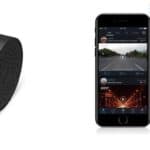
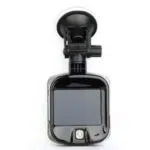
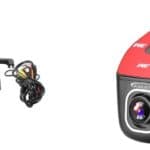
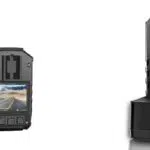
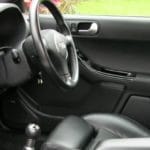
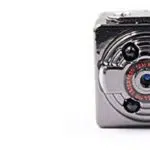
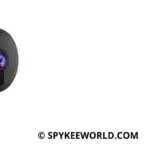
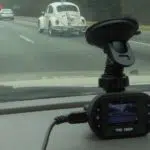
Leave a Reply